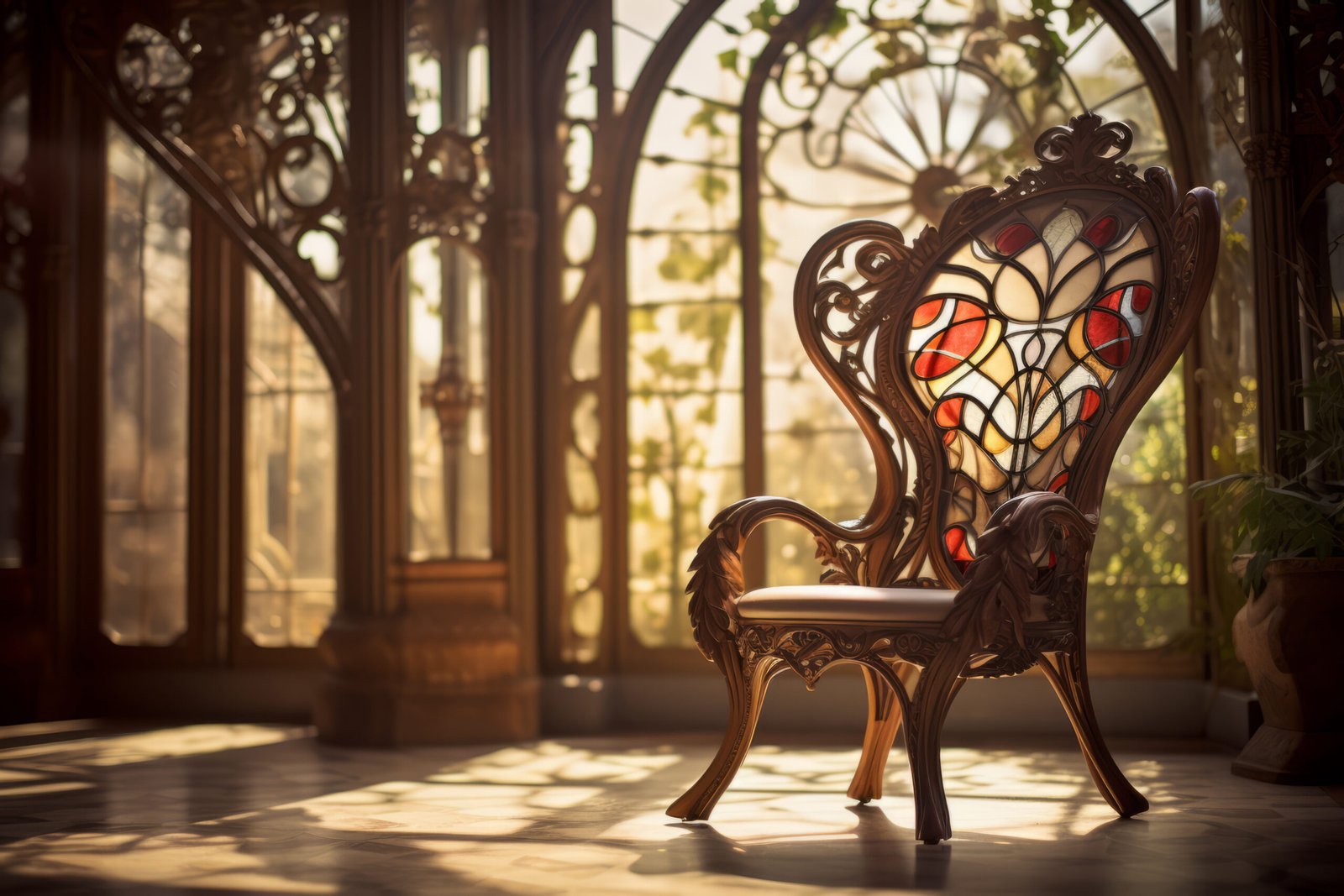Imagine walking through the gilded halls of the Catherine Palace near St. Petersburg. Sunlight streams through towering windows, illuminating a symphony of mahogany chairs with Roman scrollwork, satinwood tables adorned with Greek key patterns, and lacquered cabinets whispering tales of an empress who reshaped a nation’s aesthetic soul. This was the world of Catherine the Great furniture—a deliberate fusion of art, power, and cultural ambition that propelled Russia onto Europe’s decorative arts stage.
The Empress Architect: Crafting Russia’s Golden Age
Catherine II didn’t merely collect furniture; she weaponized it. Ascending the throne in 1762, she viewed interior design as a tool to modernize Russia and assert its sophistication. Dismayed by Baroque excess, she championed Neoclassicism—a style echoing democratic ideals of ancient Greece and Rome, yet paradoxically suited to imperial grandeur. Under her patronage, Russian craftsmen evolved from provincial artisans to rivals of Parisian ébénistes. She established imperial workshops, imported European masters (like David Roentgen), and mandated training in precision techniques. Her decree was clear: Russian interiors must “stand equal to Versailles in taste, but surpass it in ingenuity.
Neoclassical Nuance: Decoding Catherine’s Signature Style
Catherine’s furniture masterfully bridged two eras:
| Feature | Rococo Influence | Neoclassical Dominance |
|---|---|---|
| Form | Curved legs, asymmetry | Straight lines, symmetry |
| Motifs | Playful shells, vines | Greek frets, acanthus leaves |
| Materials | Gilded oak | Cuban mahogany, satinwood |
| Techniques | Carved florals | Marquetry, pietra dura |
| Emotional Tone | Whimsical romance | Intellectual order |
Her pieces whispered restraint: a writing desk with geometric marquetry parquets, or a chair with fluted legs mimicking Doric columns. Yet luxury prevailed—think amber inlays, ormolu mounts, and velvet upholstery dyed with rare cochineal.
Why Neoclassicism? For Catherine, it was political. The style’s association with Enlightenment rationality mirrored her reformist image. When she received diplomats in rooms furnished with Roman-inspired stools and Etruscan vases, she signaled Russia’s entry into the civilized world.
Palaces as Prototypes: Where Catherine’s Vision Came Alive
Her residences were living catalogs of this revolution:
- The Catherine Palace (Tsarskoye Selo): The Green Dining Room featured English-made mahogany tables with Russian-made gilded bronze mounts—symbolic of her hybrid approach.
- Pavlovsk Palace: Designed by Charles Cameron, its Greek Hall housed chairs with klismos curves and settees draped in Lyon silk, proving Russian craftsmanship could equal French luxe.
- Hermitage Museum: Her private retreat displayed “mechanical tables” by Roentgen, featuring secret compartments and automatic drawers—marrying function with theatrical flair.
The Craftsmen’s Renaissance: Names Behind the Masterpieces
Catherine’s demand birthed legends:
- Andrey Voronikhin: A serf-turned-architect whose marquetry work used 15 wood types to create trompe-l’oeil architectural vistas.
- Matvey Veretennikov: Master of pietra dura, embedding jasper and lapis lazuli into tabletops.
- Gambs Brothers: Their St. Petersburg workshop produced iconic “Catherine” armchairs—mahogany frames with oval medallion backs.
These artisans blended European blueprints with local materials like Karelian birch, creating a distinct Russian Neoclassical identity.
Legacy in Grain and Gold: How Catherine’s Taste Endures
Catherine’s furniture legacy rippled far beyond palaces:
- Aristocratic Adoption: Russian nobles copied her styles, sparking demand for locally made “Neoclassical” suites.
- Cultural Shift: By prioritizing craftsmanship, she elevated furniture-making to a fine art, founding schools that trained generations.
- Modern Echoes: Designers like Carlo Scarpa and contemporary Russian studios still reference her blend of rigor and opulence.
Hunting History: Identifying Authentic Catherine-Era Pieces
Spotting genuine 18th-century Russian Neoclassical furniture involves detective work:
| Trait | Authentic Indicator | Common Reproduction Flaw |
|---|---|---|
| Wood | Cuban mahogany (dense, deep grain) | Stained birch or veneer chips |
| Joinery | Dovetail joints, no nails | Glue-heavy construction |
| Motifs | Mythological scenes (Apollo, Diana) | Generic florals |
| Provenance | Links to imperial workshops | “Style of” attributions |
Look for inventory stamps from palaces or makers like Roentgen (crown + “DR” monogram).
Conclusion:
Catherine the Great’s furniture wasn’t just decor—it was diplomacy. Through mahogany and marquetry, she curated Russia’s identity as a cultural titan. Her chairs, tables, and cabinets remain frozen manifestos: testaments to an empress who understood that true power resides not only in armies, but in the curve of an armrest or the gleam of inlaid amethyst. Today, as these pieces grace museums from the Hermitage to the Met, they challenge us to see furniture as a force that can, quite literally, build empires.
FAQs
1. Did Catherine the Great design her own furniture?
No, but she acted as creative director—approving designs, selecting craftsmen, and demanding modifications. Her letters reveal obsessive attention to detail, like insisting on “less gilding, more walnut” for a secretary cabinet.
2. Where can I see original pieces today?
Top collections are at St. Petersburg’s Hermitage Museum, Pavlovsk Palace, and Tsarskoye Selo. Outside Russia, the Metropolitan Museum of Art and Waddesdon Manor (UK) hold significant examples.
3. What woods were favored in Catherine’s era?
Cuban mahogany (for its rich color), satinwood (for intricate marquetry), and Karelian birch (a speckled local wood used as veneer). Gilded lime oak appeared on ceremonial pieces.
4. How did Russian Neoclassical differ from French or English?
Russian pieces were bolder in scale, used darker woods, and incorporated more metal mounts. Motifs often featured double-headed eagles or local flora like wheat sheaves—subtle nods to national pride.
5. Are there “lost workshops” producing replicas today?
Yes! The Tsarskoye Selo Lapidary Workshop still crafts museum-quality reproductions using 18th-century techniques. Buyer beware: authentic antiques require provenance documentation.
6. Why is so little Catherine-era furniture on the auction market?
Most remained state property. Privately owned pieces were seized during the 1917 Revolution. Rare sales (e.g., Sotheby’s 2009) have seen armchairs fetch over $1.2 million.
7. Did Catherine influence furniture beyond Russia?
Absolutely. Her massive commissions stimulated workshops across Europe. German artisans like Roentgen redesigned entire production lines to meet her demand for mechanical furniture.

